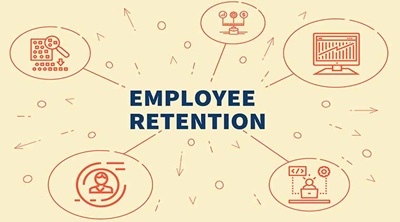By
Andrew Gilliam
|
Date Published: June 04, 2019 - Last Updated December 03, 2019
|
Comments
Admit it! Working in a contact center isn't always exciting, and when it
is... that's not necessarily good. Contact Center Agent also isn't a title
near the top of most fourth graders' wish lists: race-car driver, lawyer,
astronaut, president, and pop-star have slightly more cachet. As a result,
it can be a struggle for even the best contact centers to attract and
retain top talent.
Demand for employees is constant, and with relatively low barriers to
entry, people from all walks of life might find themselves working in a
contact center. It may not be their dream job, but it pays the bills and
has air conditioning. It could be an unexpected detour after a career
setback, or perhaps it's a pre-requisite to the job they really want.
Contact centers are popular with students; it is full-time work that can
accommodate unusual schedules and hours. In the IT field, particularly,
support roles are often viewed as a necessary rite of passage to doing the
technical work that lured most to the industry.

Many employees love contact center work, and they wouldn't leave if you
paid them. However, that's not the norm for most organizations. We can't
rely on finding the perfect employee to happily stay with us, doing the
same repetitive work, until they retire. Instead, the trick is to maintain
a steady flow of top-performers, engage them longer, and maximize their
value to the organization during the short time we have them.
Determine What Drives Them
Companies have a huge blind spot when it comes to thinking about jobs. It's
ironic because customers have a similar blind spot towards how their needs
are met. We tend to think of jobs in terms of a to-do list that needs
completing. We probably already know how to do the task, but there's just
too much to do ourselves. When hiring, we're often looking for someone to
complete our to-do list the way we would do it ourselves. It works, but
it's not particularly interesting for the employee, and we could be missing
a lot of value.
Bringing outside perspectives into an organization can be a real
game-changer. At work, we tend to create our own echo chambers, stifling
innovation and progress. Of course, it's important new employees gain an
understanding of how we do things and why. Our evolution depends on an understanding of how outsiders perceive our work. Plus, it just makes
employees feel good to know we're making an effort to learn from them. Not
many bosses bother to learn from fresh-faced, minimum wage subordinates.
As you bring employees onboard, make a point to learn their long-term goals
and aspirations, both personal and professional. If they don't have any,
help them find some. If their aspirations aren't related to your business,
investigate how this job might support them indirectly. Don't stop talking
about these things just because you've settled in, keep the dialog going
over the entire course of employment.
Employees appreciate managers who are interested in them as a person, not
just a means to an end of the to-do list. Helping employees make progress
toward their long-term goals can be rewarding for managers, too! Sharing in
your employees' ambitions makes work more interesting, and it can help
relieve fatigue and burn-out caused by the daily grind.
Focus Development on Common Ground
Once you determine employees' goals, look for ways business objectives and
job activities might align with those goals. Even if the link is indirect
or tangential, planning for employee development with their personal
interests in mind will be much more successful, engaging, and demonstrate
concern for their growth. As a result, the business may discover new ideas
and solutions that improve operations, but they'll certainly retain a
more-skilled employee longer.
My manager is particularly good at this strategy, and I'm confident that
it's had a significant impact on how successful our team has been. We've
derived several benefits and innovations from developing employees in
ways that align with their interests. It won't surprise you that I've been
obsessed with our survey since I was an intern, but it's not just a success
story for me.
One of my colleagues is studying instructional design, and he put his
skills to work developing an online training course to help our student
employees find jobs once they graduate. Another, who's passionate about our
diversity and inclusion mission, developed multilingual communication aids
to help our walk-up staff describe complex computer parts and concepts to
international students. Even part-time employees like to make the position
their own. For one, her first love is photography. She takes photos of
employees for their online profile and ID badges, and she uses her graphic
design skills to create artwork for signage and social media. The list goes
on, and on.
Learning what motivates your employees and identifying job growth and
stretch opportunities that align with their personal aspirations is good
for employees, and it's good for business. Not only have we kept these
employees interested in the work we hired them for, but we've also been
able to in-source projects that otherwise would have cost much more.
Photo © OpturaDesign - stock.adobe.com